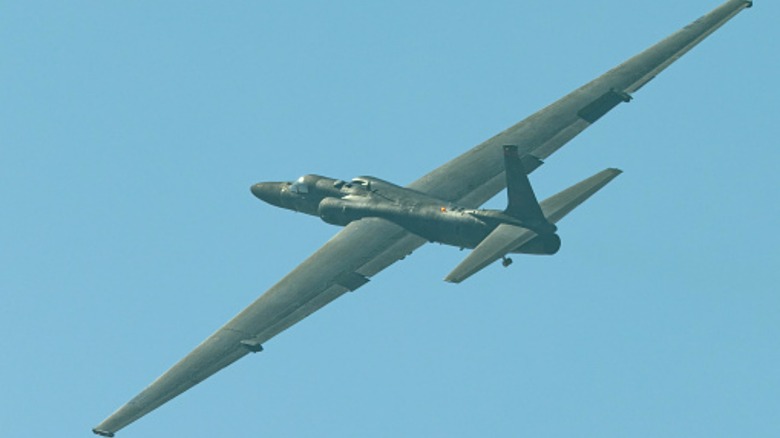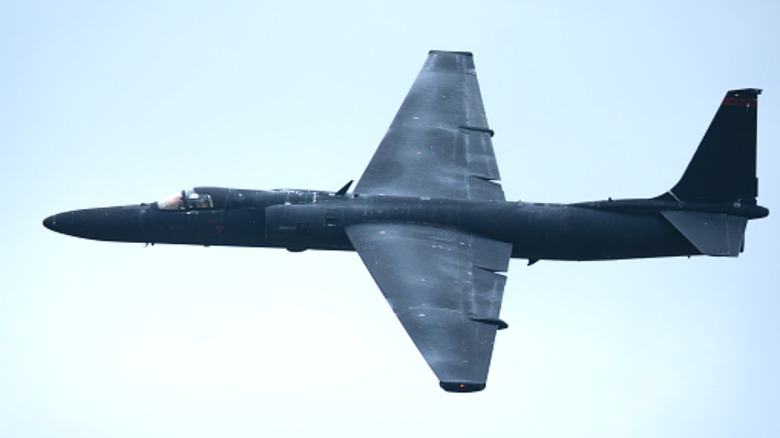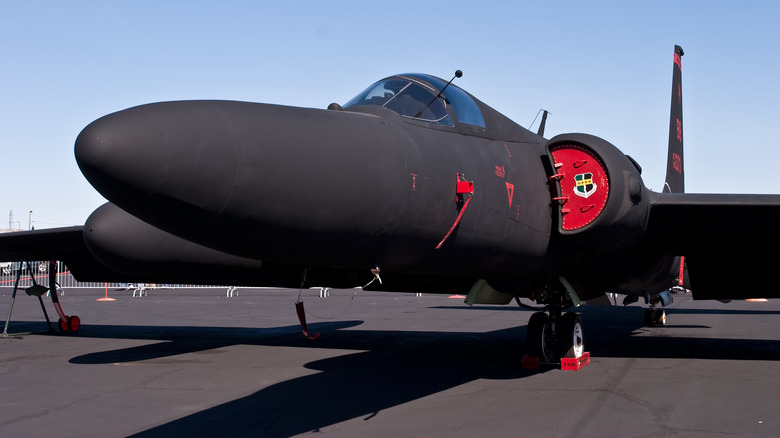
Rancho_runner/Getty Images
You don’t hear much about it, but the U.S. Air Force has been flying an aircraft that made its first flight in 1955. The U-2 Dragon Lady is one of the longest-serving aircraft in the U.S. inventory, and there’s a reason the USAF continues using it in one military conflict after another — it’s reliable, difficult to shoot down, and can perform a variety of tasks in and out of combat operations.
The U-2 arose after World War II when the U.S. sought to utilize aerial reconnaissance against the growing threat of the Soviet Union. This necessitated an aircraft capable of flying at incredibly high altitudes and the development of special equipment to conduct intelligence, surveillance, and reconnaissance (ISR) missions in and out of enemy territory. The U-2 entered development in the early 1950s and continued production until 1989, leaving 31 operational aircraft in the inventory.
Since its first mission in 1956, the U-2 has flown in support of every major military operation during combat and peacetime operations. Because of this, some may wonder why the USAF continues using such antiquated equipment when unmanned aerial vehicles like the RQ-4 Global Hawk or ISR-capable satellites are readily available. The simple answer is that the U-2 has a demonstrated track record of success going back nearly 70 years and serves its purpose well.
The Dragon Lady served the USAF well

Rancho_runner/Getty Images
An aircraft doesn’t remain in operation for over seven decades without putting something on the table, and the U-2 didn’t disappoint. While the USAF uses it to gather intelligence during combat operations, it can support strategic ISR missions during peacetime. USAF pilot Capt. Francis Gary Powers’ U-2 was shot down over Sverdlovsk, Soviet Union, in 1960, escalating tensions between the U.S. and the USSR.
Two years later, another U-2 was shot down over Cuba, furthering tensions. A U-2 captured the images of nuclear missile site construction in Cuba, which sparked the 1962 Cuban Missile Crisis, and more recently, a U-2 tracked a Chinese spy balloon over the United States. Throughout all these engagements, the U-2 provided excellent and relatively timely intelligence to warfighters, so it played an essential role in numerous operations since its introduction.
The U-2 has a small radar signature and operates at a 70,000-foot altitude, which makes it challenging to shoot down. Still, the U.S. lost some while flying missions over enemy territory, but the USAF continued using U-2s long after more robust and technologically advanced options arose. These days, ISR missions employ various collection tools to build a complete picture of the battlespace, and the U-2 is still an integral part of that endeavor.
Specialized film somewhat limited operations

Eugene Berman/Shutterstock
For most of its active service history, the U-2 flew with an onboard camera capable of a 66-inch focal length. The aircraft often flew as high as 70,000 feet and still took excellent images of targets miles away. This was long before the advent of digital imagery, so the U-2’s unique optical bar camera required the development of wet film.
The film had to be developed at Beale Air Force Base in California by the 9th Reconnaissance Wing before analysts could check it for intelligence data. Despite the difficulty the camera posed, its worth was apparent in the intelligence products it produced. Still, the USAF finally replaced the antiquated technology in the summer of 2022.
Imagery isn’t the only capability of the U-2. While the film required physical development, its other sensors, capable of collecting signals intelligence (SIGINT) and measurement and signature intelligence (MASINT), transmitted instantly to analysts worldwide.
The USAF plans to finally retire the U-2 in fiscal year 2026, but before that happens, it’s being used to test new artificial intelligence tools and advanced communications technologies. In 2020, the USAF outfitted a U-2 with AI technology and let the system operate the aircraft, so innovations continue despite the aircraft’s planned retirement. This isn’t the first time the U-2 has been on the chopping block, so there’s a chance it could survive its planned obsolescence in FY26, but only time will tell.